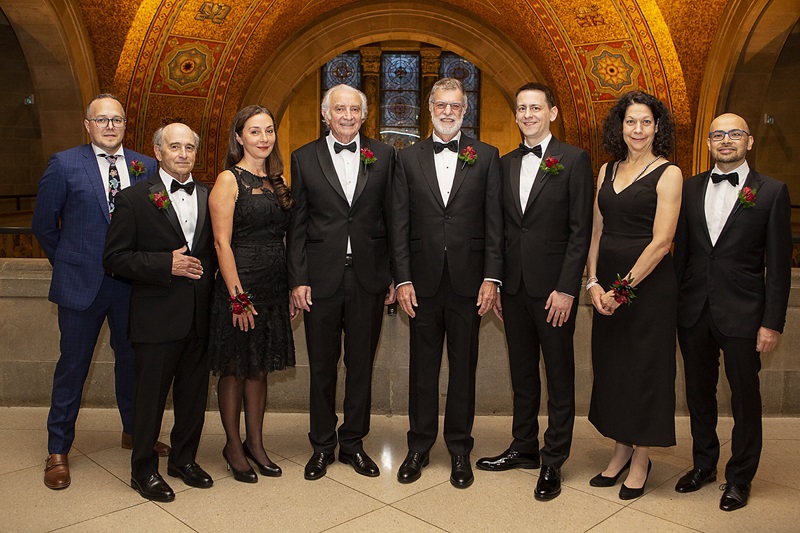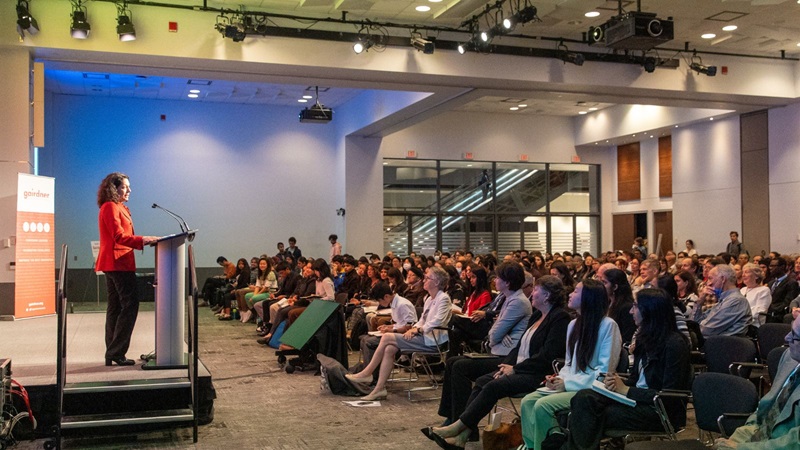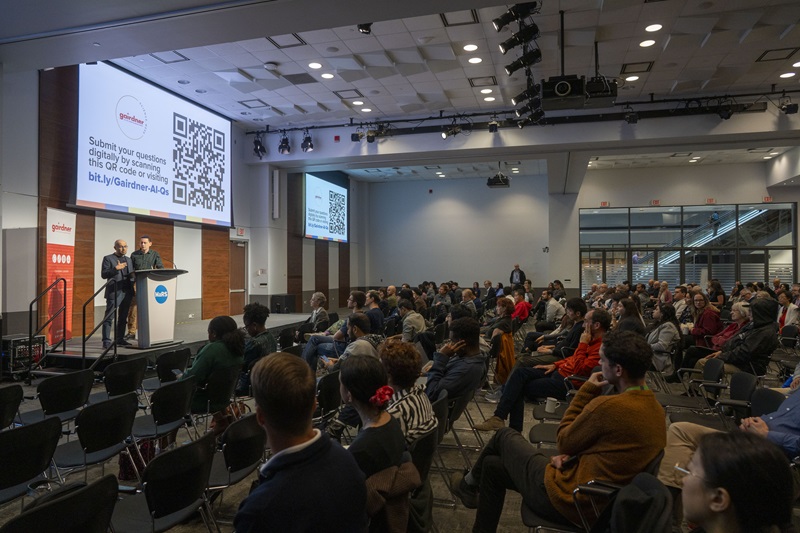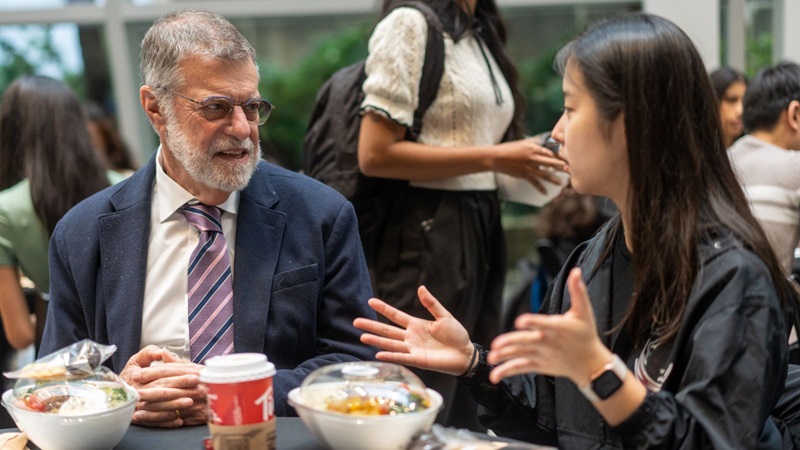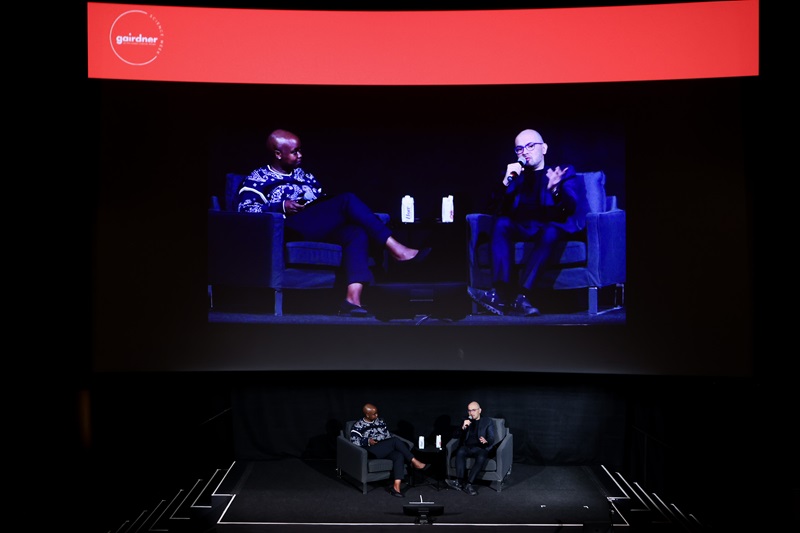2020 Canada Gairdner Laureate Lectures

Farah Qaiser recently completed a Master of Science at the University of Toronto, where she carried out DNA sequencing to better understand complex neurological disorders. When not in the lab, Farah enjoys writing about science and scientists for various media outlets and is one of the co-founders of the Toronto Science Policy Network.
Since 1957, the Gairdner Foundation has distributed 395 Canada Gairdner Awards to the world’s leading biomedical and global health researchers. Of those awardees, 95 have gone on to receive Nobel Prizes, with the most recent examples being Dr. Jennifer Doudna and Dr. Emmanuelle Charpentier for their development of CRISPR-Cas as a genome editing tool. This year’s winners include researchers who have contributed in different but overlapping ways to our understanding of how cells interact with each other and with their extracellular environment.
On the 22nd and 23rd of October 2020, the 2020 Canada Gairdner Laureate lectures took place virtually, moderated by Dr. Janet Rossant, who is the current President and Scientific Director of the Gairdner Foundation.
In this post, I’ll highlight some of the key take-aways from the 2020 Canada Gairdner Laureate Lectures.
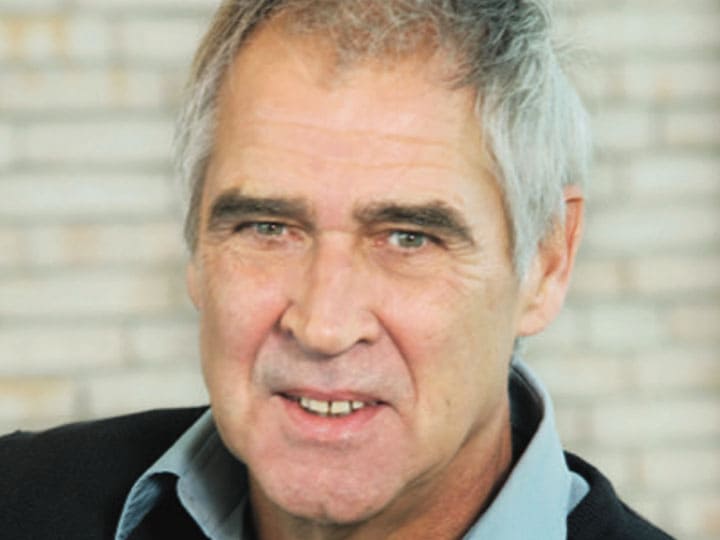
Dr. Rolf Kemler
Canada Gairdner International Award 2020
Like Dr. Masatoshi Takeichi, Kemler used experimental techniques to identify and better understand cadherins, a calcium-binding protein responsible for holding cells together. In his lecture, Kemler shared some of the data that drove early efforts and highlighted how the use of an immunological approach, specifically antibodies targeting the surface antigens in early mouse embryos, enabled him to clone the cadherin gene, demonstrate the protein’s critical role in cell adhesion, and identify other interacting proteins, such as ?-catenin (now known to be a key component of the Wnt signalling pathway).
What is Kemler’s hypothesis today? He suggests that the amino acid Lysine-49 is a hotspot for the regulation of ?-catenin, whose specific activity is modulated through activities such as methylation and acetylation. But to confirm this hypothesis, additional investigation will be necessary.
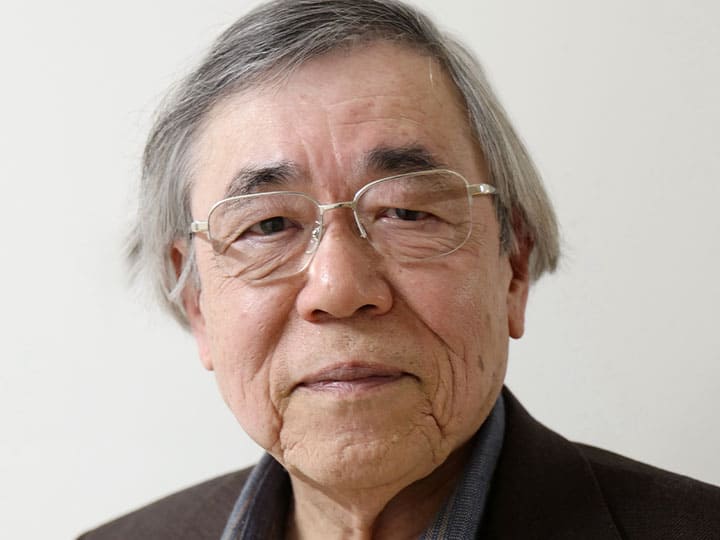
Dr. Masatoshi Takeichi
Canada Gairdner International Award 2020
Takeichi recounted the journey involved in discovering and characterizing the biology of cadherins in animal cell adhesion and signalling – a feat for which Takeichi was co-awarded a Canada Gairdner International Award 2020, alongside Dr. Rolf Kemler. This journey started when Takeichi noticed something odd: that newly plated cells suspended in conditioned media attached to the surface of culture dishes more slowly, than those suspended without conditioned media.
Throughout the course of a long, winding research career across multiple continents, Takeichi found that cadherins could explain this odd phenomenon: that cadherins bound cells together, and that cells with the same cadherins tend to cluster together, explaining how different cells are sorted and organized to form functional organs.
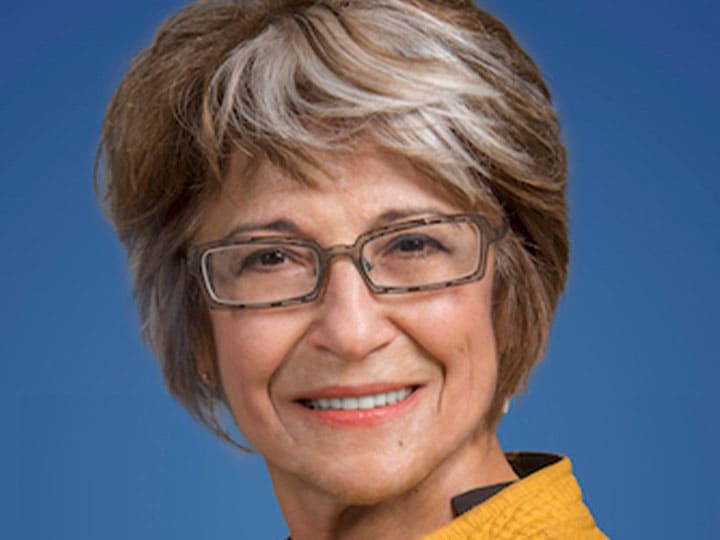
Dr. Mina Bissell
Canada Gairdner International Award 2020
Bissell began her lecture by posing the question: “Why don’t we get more cancer? How do 10 to 70 trillion cells, each with the same genetic information, coordinate to make you, you?” Bissell explained that she chose the mammary gland as an experimental organism to explore questions such as these, given that the gland develops again and again in female mammals, just like an organism.
Bissell’s work showed that the extracellular matrix could regulate gene expression (and vice versa) in both normal and diseased tissues. Her research group’s studies also characterized “Dynamic Reciprocity”, which is a term that refers to the ongoing interactions between cells and their microenvironment. This isn't a one-way dialogue – it’s a bidirectional interaction. Bissell ended her talk by acknowledging the many students and post-doctoral fellows in her lab, and implored to young scientists that this is a whole new horizon.
“You have a whole life – go do something with it!” said Bissell.

Dr. Elaine Fuchs
Canada Gairdner International Award 2020
For Fuchs, a talk about skin stem cells in the early days of her graduate studies immediately hooked her into this exciting field. Here, stem cells refer to the building blocks of tissues and organs. Their key properties include self-renewal (i.e. the ability to divide infinitely) and the potential to differentiate into different cell types, such as cardiac cells. Fuchs investigated stem cells throughout her forty year research career, and shared various findings about what her research group has learned about the role of tissue stem cells in homeostasis, wound repair and cancer, including the fact that stem cells are largely in charge of their behaviour and that stem cells receive hair regenerative cues to initiate hair growth.
"I cannot tell you what we'll be doing in the next decade," said Fuchs in her closing remarks, but said that she can confidently share that she is continuing to work with a wonderful group of students and post-doctoral fellows.
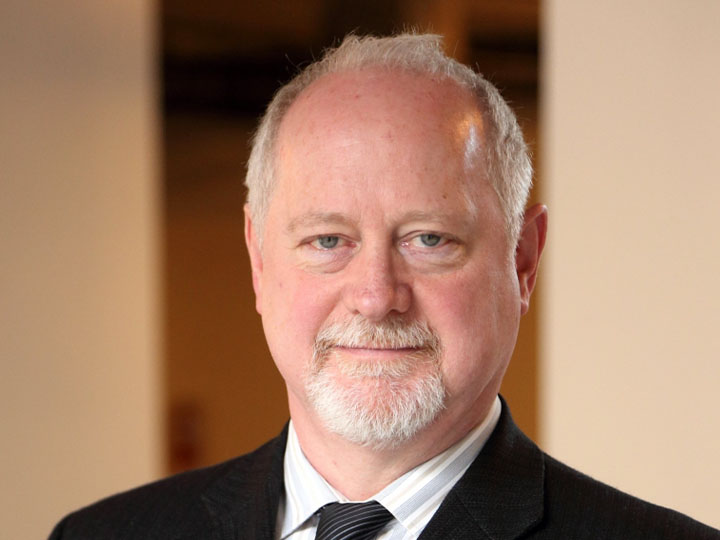
Dr. Guy Rouleau
Canada Gairdner Wightman Award 2020
In his talk, titled “From Neurogenetics to Open Science,” Rouleau first explain the concept of missing heritability: the idea that despite progress in identifying genes implicated in disorders such as ALS, new genes can only explain a limited number of cases, suggesting that other reasons may explain this discrepancy, such as de novo mutations (i.e. a mutation which is first found in an individual, and not their parents). Rouleau shared his research group’s efforts in identifying and elucidating the genetic architecture of neurological and psychiatric diseases, including ALS, autism and schizophrenia. He noted that there are hundreds, perhaps thousands, of genes which predispose an individual to neurodevelopmental disorders, where de novo mutations are an important cause.
Rouleau also introduced lecture attendees to the concept of Open Science, saying that this is a game-changer for the field of neuroscience as it will break down barriers for collaboration, allow for faster data reproduction, and leverages the potential for big data and personalized medicine. Rouleau explained how The Neuro is developing and implementing Open Science, and invited all those interested in learning more to attend the upcoming The Neuro-Gairdner Open Science Symposium.
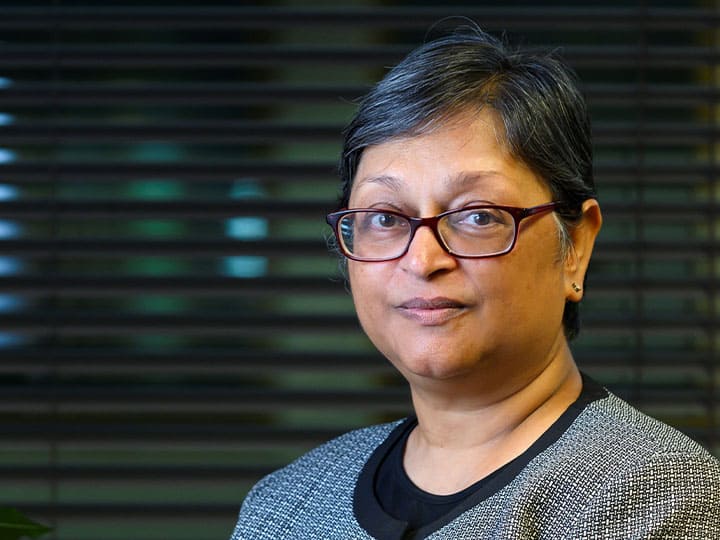
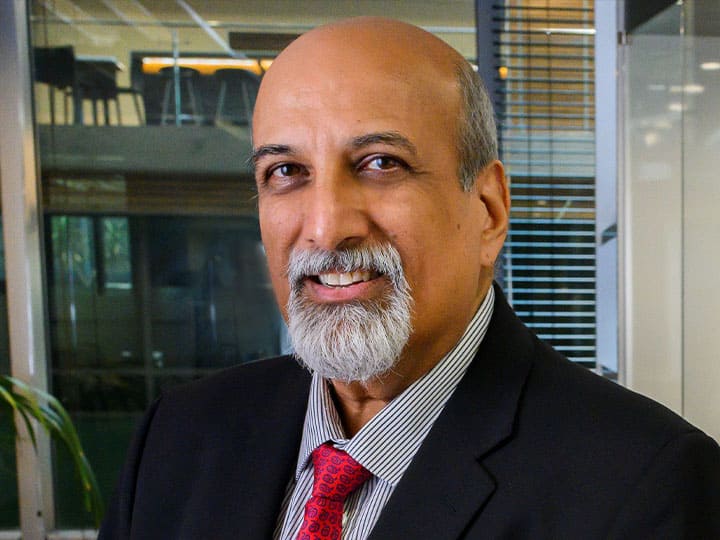
Dr. Quarraisha & Salim Abdool Kari
John Dirks Canada Gairdner Global Health Award 2020
Dr. Quarraisha Abdool Karim began her lecture by explaining that in the 1990s, the existing HIV prevention strategies were limited to the ABCCs (abstinence, behaviour i.e. to be faithful, and condoms), which were insufficient prevention tools for young women as each depended on the cooperation of their partners.
Over a thirty-year research career, the Karims successfully developed a Tenofovir gel, demonstrating that antiretrovirals prevent sexual transmission of HIV, and provided an option for women to protect themselves. This laid the foundations for pre-exposure prophylaxis (PrEP), an HIV prevention strategy that is contributing to the reduction of HIV infections around the world.
"Why are we still working on this 30 years later?" asked Dr. Salim Abdool Karim in his closing remarks. He noted that while there has been great progress, we are still lagging behind in the prevention of HIV infections. The Karims are now testing a newer version of Tenofovir, called Tenofovir Elafenamide, to develop an arm implant to place in women, like a contraceptive implant.

Dr. Roel Nusse
Canada Gairdner International Award 2020
In his lecture, Nusse walked attendees through key findings from his research career, including his pioneering work on the Wnt signaling pathway, which is an evolutionarily conserved pathway that regulates processes such as cell migration and cell polarity, and plays an important role in development, cancer and stem cells.
Nusse and Harold Varmus discovered the first mammalian Wnt gene as an oncogene (cancer-causing gene) in mouse breast cancer, and afterwards, Nusse identified Wingless, a key Drosophila (fruitfly) developmental gene. Using Drosophila genetics, Nusse's research group has continued to elucidate the mechanism and role of Wnt signaling over many years, leading to the general realization of the links between normal development and cancer.
Catch up on tweets from the 2020 Canada Gairdner Laureate lectures here. You can also learn more about each of the 2020 Laureates in this series of articles, comics, videos and accompanying lesson ideas, created in collaboration with the Canadian Society of Molecular Biosciences and the Michael Smith Laboratories.









.tmb-cfthumb_fb.jpg?Culture=en&sfvrsn=c0e04058_1)

